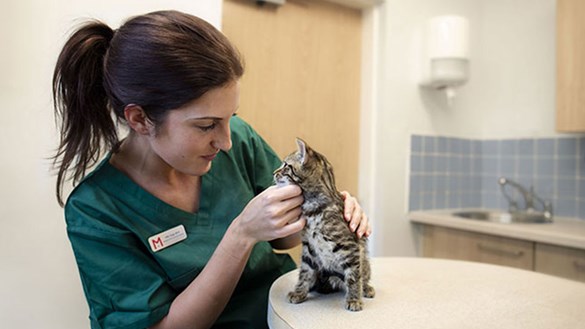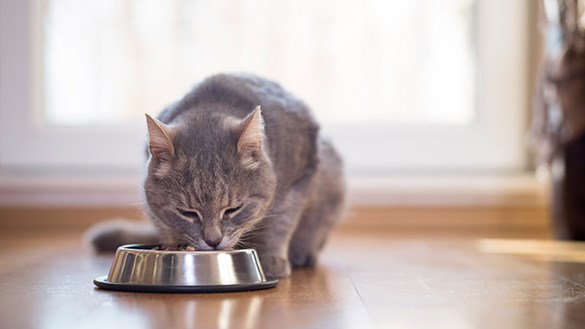Multi-Cat Households
43% of cats live in a multi-cat household. Cats are independent by nature and this means that many won’t be living together in harmony.
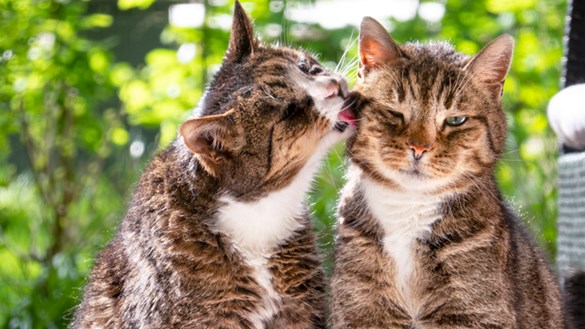
There's a lot to think about when introducing a new cat into your family, it's always worth a conversation with your vet or veterinary nurse for helpful advice. They'll be able to discuss any concerns or issues that you have.
Introducing a new cat to the family
If you are thinking about getting a new cat or kitten, there are a few things to consider in advance; a key one is the personality of your cat. If your cat is generally quite outgoing, friendly and playful, it’s likely they will be more accepting of a companion. If they are quiet and timid, you need to consider the personality of a new cat as there may be a personality-clash.
Another thing to consider is how much time you have to get them acquainted. The best approach, is to make slow introductions. If you live in a busy household, this may prove difficult. You might end up having the two cats together too quickly and this could cause problems down the line.
Space is also important, in multi-cat households, it’s best to give the new cat its own feeding area, litter tray and scratching post. This will help your existing cat feel that their space hasn’t been invaded. Recent research demonstrates that cats prefer it if they have access to one more of every resource than they need. For example, if you have two cats in a house, you should have three water bowls/litter trays/feeding stations all spaced very far apart from each other. It’s tricky to monitor, but if you get it right in the early days, you should find they get along better.
Cats also like to be able to go "upwards", so shelving and cat trees can be a great way of providing extra space.
What are the steps for introducing a new cat or kitten?
Don’t rush it, try to spend time on the key steps below:
Keep your cat in a safe room
For the first few days you should keep your new cat in a safe room. You will need to cater for all of their essential needs; a litter tray, fresh water and food, a comfortable bed, a hiding place and a high point. It’s also good to provide them with a comforter, something familiar that they had with their breeder or rescue centre. Company is also important , don’t just leave them in the room alone all the time.
Exchange the scents of your cats
A good way to do this is to swap bedding between the cats, this will allow each cat to become familiar with the scent of the other cat. If you’re able to, after a while you could even swap rooms. Give your existing cat an opportunity to explore the safe room. At the same time, your new cat could be getting to explore another room.
Allow your cats safe visual contact
Without a doubt your cat will have been sniffing around the door of the safe room, this is fine. Once any signs of aggression at the door have subsided, you can think about letting the two cats see each other. You should still maintain physical separation. You could use a crate, a transparent door or even just a small crack in the door. Once you have started this process, you should increase the frequency as much as you can ensuring that neither cat becomes distressed.
Introduce your cats with caution, and supervise them
This is where your cats get to meet for the first time. Only proceed if there are no signs of aggression from either side. It should always be supervised and for a few minutes at a time initially. If they appear to get along, then of course you should extend the time together. It’s a good idea to use treats and toys as a way of encouraging them to interact and play nicely together or even to just distract them if things get a little awkward.
Once your cats are comfortable, let them interact with limited or no supervision
All of the steps above are building up to the point where you can allow both of your cats to have unsupervised contact. Again, you should increase the time gradually. Once you’re happy that both cats are comfortable, you should allow them access to each other more frequently. Eventually, you should get to the point where you can leave the cats with access to the ‘safe room’ and allow them to interact.
Once you’ve reached and completed step 5, it’s really important to ensure that the cats aren’t expected to share resources and have their own spaces should they need some quiet time.
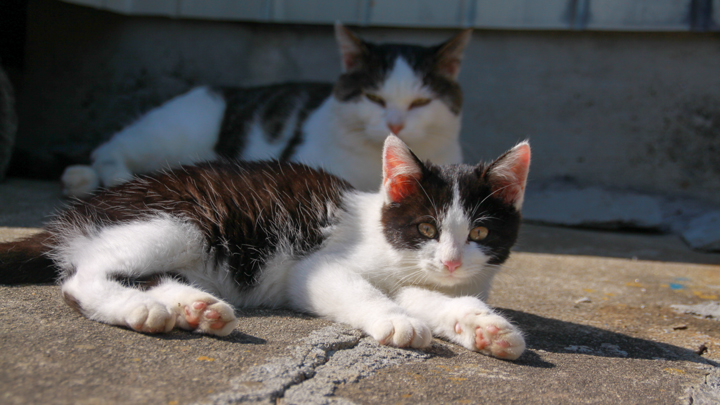
I already have more than one cat and they don’t get along
If you already have more than one cat, they could all be living together in perfect harmony, or they could be co-existing indifferently. Sadly, this isn't always the case, with one or more being very unhappy with the arrangement.
If they aren’t happy, it could be that at the outset, the introductions were rushed or non-existent and they have never accepted each other. It’s a tricky situation to manage and even more difficult because cats are very good at hiding stress. If you think that your cat may be stressed out by their living arrangements, then you should speak to your vet for advice.
To try and ease the situation, it’s worth going back to the basics and considering whether there is anything that you can do to improve the situation.
Tips on improving your multi-cat household
There are a few ways you can improve your multi-cat household stress levels if you notice a hostility or unhappiness.
Separate eating and drinking areas
Ideally away from a high-traffic area and not too close together. This should mean that both or all cats can relax and eat and drink in peace. It’s important that this is not a competition as this means one cat may lose out. Cats will tend to tolerate this to eat but may skip the drink. This is not ideal and can lead to health issues. It will help to have additional water stations around the house or garden. Try to make sure that the feeding and drinking stations are not within eyeline or view of each other.
Additional high spots and quiet places
Cats like to find themselves a high spot that allows them to watch the world go by or to hide from the world, depending on their mood. If there is only one of these around the house, it becomes a competition as to who’s spot it is. Try and provide several options for high spots or indeed quiet places.
Litter bowls and scratching posts
If your cats use a litter tray, they should have one each plus a spare. Likewise, scratching posts are ideally not shared. Wherever possible try and situate them away from each other to avoid one cat being scared to use the tray. This is not always practical, but it’s definitely something that you should watch if your cats aren’t getting on – you may be surprised at what you notice.
How can I tell if one of my cats is stressed?
Cat behaviour can be complex and differs in each cat. Some cats may be stressed if they are hissing and growling at each other.
However, if your cat has been experiencing stress for a long time, the signs may be slightly harder to spot. Unlike other pets, many cat’s show very limited signs of stress for something, despite actually being very stressed.
Signs that indicate your cat is stressed
- Always being on the lookout, scanning the area to try and stay safe
- Hiding away, although your cat may just prefer to sleep in a quiet spot
- Less tolerance and attacking other cats
- Increased and excessive scratching of their post or your furniture
Other signs could include urinating around the house; this is an attempt to mark their territory and signals that they are really stressed, and you need to intervene. In some cases, cats may develop cystitis, this can be brought on by stress and is very painful and can become serious. Please speak to your vet if you are concerned.
Watch out for dominant or aggressive cat behaviour
Look out for the more dominant cat displaying passive or silent aggression towards the other. This could include stealing a favourite resting place or blocking the stairs or the hallway, so that the other cat is intimidated and can’t get past. Use distraction here for the dominating cat; a toy or simple diverting their attention away.
Many households use a plug-in diffuser to instil some calm around the house. This has the added benefit of calming down one cat and helping to calm the stressed cat.
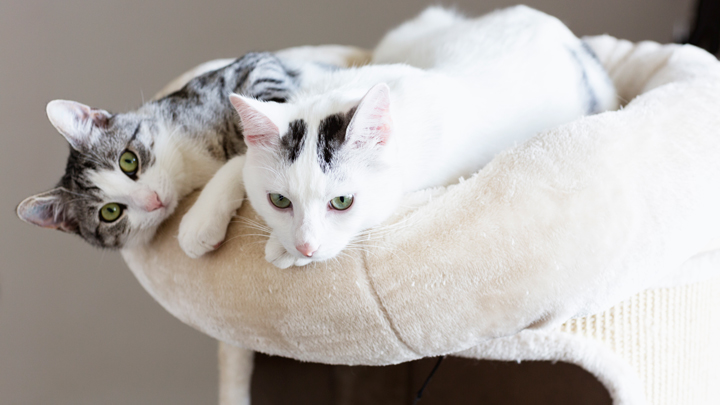
Talk to your vet about any concerns you have about owning more than one cat.

Our Healthcare Plan For Your Cat
With the Medivet Healthcare Plan, you can save an average of £165 each year and that’s without discounts that the plan offers on top.
Learn more


